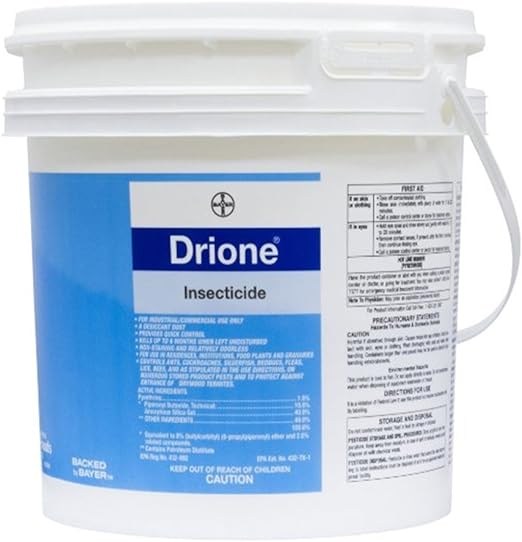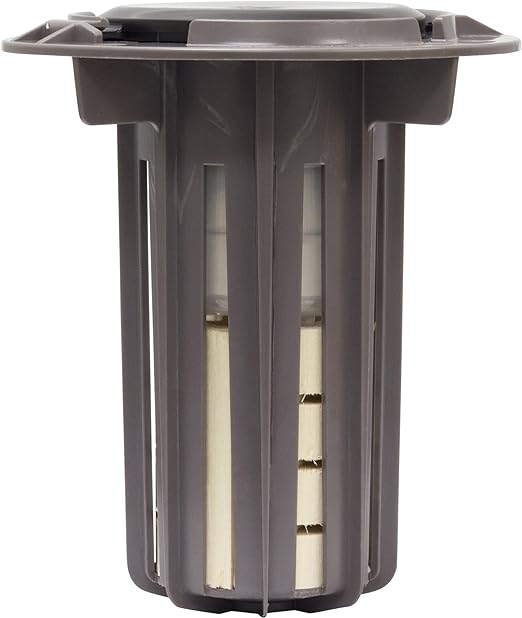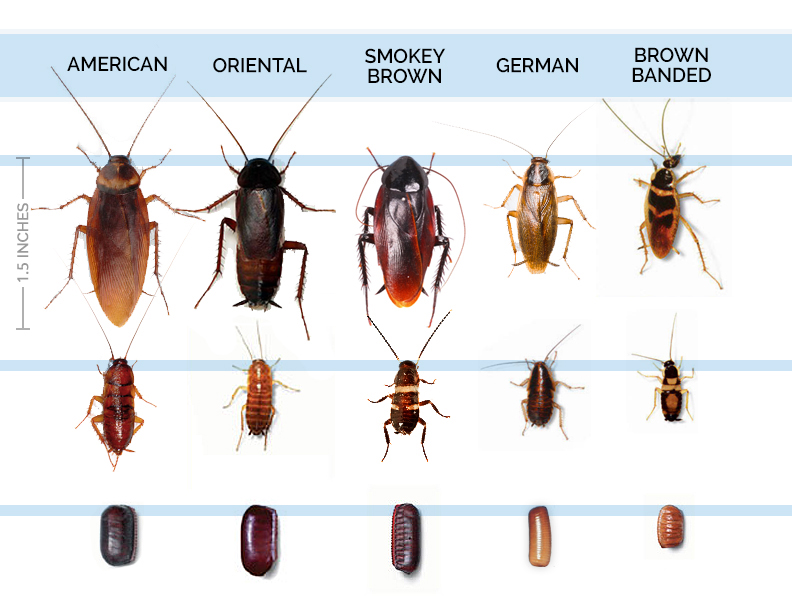A great majority of cockroaches and termites are not pests to people. Only a few species are pests in homes, and many of these originally came from the Old World, having traveled around the globe with people. The rest are humble decomposers that live under rocks, bark, rotting wood, or leaf litter and never enter homes. Most people know a typical cockroach when they see one: they are flattened, oval, usually small, with long, swept-back antennae, colored reddish brown, brown, or black, and often shiny. They usually have a pair of antenna-like cerci at the end of the abdomen. They can hide in tight crevices and lack specialized appendages or mouthparts. Those with wings fold them overlapped over their back. Recently, termites have been included in the cockroach order, making the combined cockroach-termite order, as a whole, more difficult to describe. The families of termites are clearly different from the families of typical cockroaches.
Termites, which used to be separated in their own order (Isoptera), have been folded into the cockroach order based on DNA evidence: They are closely related to one of the families of cockroaches, so all share a common ancestor. In North America, there are five families (about 50 species) of typical cockroaches and four families (about 50 species) of termites. The various families of termites are grouped together is an epifamily, Termitoidae, which recognizes how distinct they are from the typical cockroaches in the cockroach-termite order. People often confuse termites with ants. Both are small insects that live in colonies and live on or near the ground, under rocks, wood, and leaf litter. Ants, however, have the middle part of the body narrowed to a relatively tiny stalk between the large head and the large abdomen. Termites, however, have a fairly cylindrical body, only slightly narrowed behind the head. Ants lack a pronotum (a shieldlike plate behind the head, where their shoulders would be), while termites and cockroaches have a pronotum..
Appearance
Let’s start with appearance. Termites and cockroaches both have several common physical characteristics, but there are some key differences that can help you tell them apart.
A termite has two sets of wings, while a cockroach only has one set (the hind wings). The antennae on a termite are straight, while the antennae on a cockroach are curved.
A termite’s body is usually white or brown in color, but it may also be black if there is too much moisture in its environment or if it lives underground where there is not as much light available to illuminate its skin. A cockroach will always have brown coloring because it spends most of its time living outside in direct sunlight so that it gets enough vitamin D from the sun’s rays (this allows them to survive off less food than they would otherwise need).
Both termites and cockroaches have two sets of wings, but there are several key differences. Termites’ forewings are much shorter than the body length, while cockroach’s forewings can be longer or the same length as their bodies.
Termites have straight antennae, whereas cockroaches’ antennae have a greater curvature. Cockroaches also have more pronounced heads with more pronounced eyes than termites do.
- Termites can be differentiated from cockroaches by their straight antennae, thick waists and uniform body shape. Their wings protrude beyond their body length.
- A termite colony consists of workers, soldiers and reproductive queens who are able to reproduce asexually (i.e., no males are necessary).
- A cockroach’s life cycle includes egg, nymph, adult (imago) stages; it also has a mating pair that produces live young which are then called nymphs or larvae depending on the species of roach being discussed.
Habitat
Termites live in colonies in the ground, while cockroaches are typically found on the ground. Both termites and cockroaches are omnivores, meaning they eat both plant material and other animal matter. For this reason, they can be found living together under a single roof—but only if you have poor housekeeping habits.
In the wild, termites are usually found in underground colonies or in decaying wood. Termites eat wood and can cause damage to buildings if left untreated. They can be controlled with chemicals such as boric acid, which is poisonous to them but not harmful to humans.
Cockroaches on the other hand, prefer warmer climates and can be found all over the world except Antarctica because they cannot tolerate low temperatures. Wild cockroaches can be found in warm climates, under logs and rocks. They usually live in moist areas.
Diet
Termites eat wood and other plant matter, while cockroaches prefer to feast on organic matter like food scraps and glue. Termites are known to feed on wood and other plant material. They are important members of the ecosystem, breaking down organic matter and recycling nutrients back into the soil.
Cockroaches are omnivores and will eat almost anything that is available to them. Cockroaches have a much more diverse diet than termites, but like termites they eat wood too. Cockroaches also enjoy eating dead insects and even excrement from other animals (including humans). In fact, cockroaches aren’t picky about what they eat at all. This makes cockroaches one of the most common pests in homes and businesses.
As long as it contains some type of protein and fat (the two main nutrients insects need), roaches will consume it all day long. While this is gross for us humans to think about it’s actually a good thing because their scavenging habits help control populations of disease-carrying pests such as flies or rodents that spread dangerous diseases such as typhoid fever or dysentery.
Although some people think of them as pests, termites have an important role in nature. They eat dead plant material, returning nutrients to the soil for use by other organisms in the food chain. In homes and buildings, however, they can cause serious damage to wood structures because they eat wood as well.
Reproduction
Termites and cockroaches are both social insects, meaning they live in colonies. Cockroaches mate and lay eggs independently, but termites are more dependent on each other to reproduce. A female termite can lay up to 80 eggs at a time, which will hatch into larvae within a few days. The queen is responsible for laying these eggs and cares for the young until they pupate into adult workers or soldiers (more on those later).
Termites live anywhere from one to 50 years, depending on their environment and diet. Females will typically live longer than males—you can tell them apart because females have larger abdomens than males do.
Cockroaches are one of the only invertebrates that can survive without air for up to 45 minutes; this makes them especially resilient when it comes time to escaping predators or finding food sources in your home! They also don’t need much water compared with most other living things—their metabolism runs so efficiently that they don’t need as much moisture as us humans do!
Top Cockroach and Termite Killers

Evolution Cockroach Gel with Two Premium Rubber Tipped Plungers
Price : $33.75
Features :
- Dupont advice cockroach gel bait can be used in single and multi-family residential buildings, schools, commercial and industrial facilities (including warehouses, apartments, supermarkets, restaurants, motels, hotels, hospitals, food handling/storage establishments), and transportation equipment such as aircraft, trains, ships, boats, buses
- Treatment rates for all uses: for heavy infestations of cockroaches, apply 3 to 5 spots of advice cockroach gel bait per 10 linear feet for light to moderate infestations of cockroaches, apply 1-3 spots of advice cockroach gel bait per 10 linear feet each spot of advice gel bait Should equal about. 5 grams (approx. 1/4″ Diameter)
- Country Of Origin: United States
- Model Number: 383920

Drione Insecticide Dust Pail
Price: $325.00
Features:
- Drione Insecticide kills up to 6 months when left undisturbed
- Drione Insecticide is non-staining and relatively odorless
- For use in residences, institutions, food plants and granaries Controls numerous stored-product pests
- Excellent penetration into voids
- Target pests include: Ants, bedbugs, bees, box elder bugs, centipedes, cockroaches, confused flour beetles, crickets, dark mealworms, drugstore beetles, drywood termites, earwigs, firebrats, fleas, grain mites, granary weevils, lice, millipedes pillbugs, red flour beetles, rice weevils, sawtoothed grain beetles, scorpions, silverfish, sowbugs, spiders, ticks, wasps, yellow mealworms

Advance Termite Bait Monitoring Stations
Price: $140.81
Features:
- Includes one CASE of TBS systems: 10 x Advance Termite Inspection Cartdrdge (TIC), 10 x TBS station, 10 x wood block for monitor
- This bait system functions as a DETECTION tool, and does NOT contain termiticides. Install first to detect if termites are present before buying termiticides
- After termites are detected, replace with Trelona cartridges that work with these stations. Trelona is a termiticde by the same brand.
In conclusion,
Termites and cockroaches are both found throughout the United States. They can seem very similar at first glance, but they are actually very different insects. Cockroaches are usually found in warm climates, under logs and rocks. They also like to hide in cracks of walls or floors where it’s dark and moist.
Cockroaches have wings that are hard to see because they’re so small; their bodies are long and thin with long antennae sticking out from their heads like feelers on a snail’s shell. If you find these bugs crawling around your house, make sure they don’t stay there! You can use an insecticide spray to kill them off before they multiply too much or cause other problems in your home (like getting into things like food).
